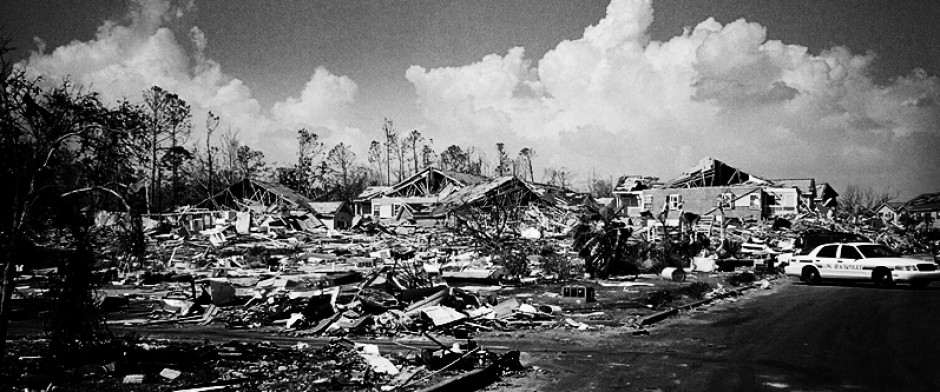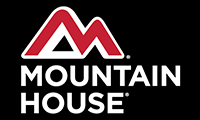
Food Shortage
In case you have been asleep for the last five years or somehow managed to not buy any groceries, you should know that the price of groceries has quadrupled over as many years. For the rest of us feeding our families, we are intimately aware of how much more we have had to pay for groceries in recent years. It has gotten so bad that many families that used to be able to purchase roughly a shopping cart of groceries for $100 now are paying upwards of $400 dollars for less food of less quality. Coupled with high prices of gas and energy, most of us have experienced a large net loss of our purchasing power as our disposable income has all but vanished. Of course this directly contradicts the Obama Whitehouse’s assertions that there has been little to no inflation and economically things are better. Ask yourself this, do you actually have more disposable income than you did just a few years ago? Has your quality of life improved? Sadly, the answer is more often than not a resounding “NO” as the numbers of individuals on government assistance programs like food stamps has exploded. This article will discuss the basics on how to weather the coming food price crisis.
You must understand that our current state of decay is just the beginning as things will get much worse in the United States. For starters, California is experiencing historic drought that is decimating its agricultural industry as we outlined in our previous article. Far worse is that our government is moving closer and closer to a totalitarian state run by left leaning Marxists heavily influenced by global bankers and corporate elites that care nothing for you and are only focused on increasing their power, wealth, and control over you. Add to this the fact the Federal Reserve continues to counterfeit over a trillion dollars a year and then bills you, the taxpayer, for the created debt even as you suffer from the very real devaluation of the dollar because of the Federal Reserve’s engineered inflationary measures. These few issues are by no means all inclusive, but illustrate some of the major drivers pushing costs higher and higher as your wages and real earnings are decimated. These government programs will only intensify as higher taxes, fees, and penalties are lumped on by local, state, and federal governments to offset their rising operating costs, which rob you of any remaining disposable income. Thus, it begs the question that many are asking…. “How will I be able to feed my family and still pay my bills?”
Fortunately, the answer is neither new nor complex. One must become self-sufficient. Self-sufficiency is the same solution our forefathers intuitively recognized and the maxim most farmers, pioneers, and Americans lived by up until the last half of the 20th Century. Many thought the time for small farms and garden plots was gone for good, but the crisis of increasing food prices has driven Americans back to rediscovering that the old ways were in fact better. So, if you have been saving your survival seeds for when things get bad, you should seriously consider planting them this year and procuring new seeds for future crops while you still can. Once things go beyond the tipping point to a full blown crisis, it will be too late to plant, grow, harvest, and use your seed stores. The garden will provided you affordable, healthy, great tasting, fresh food when no one else can afford or find it in grocery stores. Further, any excess can be sold or used to barter for other goods you may not have in surplus.
A healthy garden takes years to fully develop to its maximum potential so starting now allows you to experiment with crops, fail (yes, you will have failures), build a tool inventory, and begin building an inventory of food stores via dehydration (drying) and canning. You will learn what varieties of plants grow best where in your soil. You will also get to taste various vegetables and decide which are best suited to your family’s palate. Devising a pest control strategy that works will also be vital. All of this takes time, sweat, and practice. There are no real shortcuts to this so get started now.
To begin, select the best land you can for your crops. This may mean moving to a new location with better soil, water access, and sunlight or simply developing your backyard. For you folks still imprisoned in the cities, you may want to invest in hydroponic systems or rooftop gardens. Having the right tools will be critical. The best hand tools are not the ones made today, but old antique hand tools with solid steel implements. You can often find these cheaply online or at flea markets and yard sales. Make sure you have redundancy. You will also need an ample supply of good seeds. I recommend that you stick with quality heirloom seeds that have been optimized for your growing conditions. Make sure you get a wide variety of seeds so that you can experiment with different crops. For example, if one specific variety of tomatoes does poorly, you may find a different variety does very well saving you from a total crop loss for the season. You will also need to devise a method to protect your crop from pests such as animals, insects, and diseases. I have found solar powered electric fences are the best method for keeping out animals like deer that will wreck an entire garden in a single night. The solar powered electric fence is very easy to set up and affordable. Dusting crops like beans and potatoes with lime does well at keeping insects back while preventing nutritional diseases. I also found using a torch around plants to kill weeds is an effective organic solution to weed control. When it comes to fertilizers, bone meal and manure are two of the best organic solutions. Just make sure any manure you use is seasoned well so that you don’t introduce invasive weed species to your soil.
For those of you looking to grow gardens or enter into small farming operations, you may also want to employ low profile or clandestine methods. Many of our readers live in suburban neighborhoods with unconstitutional and oppressive home owners association (HOA) covenants that ridiculously forbid gardening. In these areas fencing in your yard may be your easiest option. If that isn’t possible, many people have turned their basements into mini greenhouses, but run the risk of drawing attention of local authorities that may mistakenly suspect illicit marijuana grow operations are afoot. In this case it may be best to actually let local law enforcement know what you are doing to prevent a mistaken and highly dangerous SWAT raid on your home. However, if the wrong people know you have food, they may target your residence to steal your crops so discrete is good. Those of us lucky enough to be in rural areas do not have oppressive HOAs and can grow large gardens, but could become subject to crop confiscation. The US Department of Agriculture (USDA) has steadily increased its efforts to identify all farming operations throughout the country and many suspect that in a time of crisis the government could use this information to confiscate crops to feed the masses. As protests in Kiev turn violent, an important, illustrative lesson from the Ukraine’s history comes to mind. During the period between 1932 and 1933 when the Ukraine fell under Soviet control, an estimated 12 million Ukrainians were intentionally starved to death as a result of resisting Stalin’s takeover of power and government mismanagement of agricultural policies. During this period, the communist government forced confiscation of all household foodstuffs and restricted the population movement to other areas all while shipping off, warehousing, destroying, or leaving unharvested millions of tons of grain that could have fed the Ukrainians. The urban populations suffered the worst and died by the millions of starvation and disease while the rural populations were demonized and blamed by the communists for the government’s actions. If you have any question as to why this genocide was carried out, Henry Kissinger succinctly explains it when he stated that if you want to control the population, control its food supply.
This Ukrainian lesson illustrates how a centralized government like ours that mismanages policies and is continuously seeking greater power could seize your crops during a crisis to effectively control our citizens. To avoid this, don’t report your crops to the government. Further, plant multiple gardens and crops in various areas throughout your property. One garden would be overt while the others would be hidden and made to “NOT” look like a standard garden. In fact, if your garden looks like a fallow field of weeds or just a part of the forest it will draw little to no attention. In addition, cultivate wild crops and livestock considered “weeds” and wild animals so that they go overlooked even by the most zealous commissar sent by the government to inspect, record, and confiscate your crops. This technique is highly successful and practical for preppers since even the most savvy of government bureaucrats are generally idiots in respect to anything that actually requires real work or true practical knowledge. The average USDA inspector couldn’t tell you the difference between spinach and burdock and certainly wouldn’t recognize chicory and dandelions as a staple food crop. Wild leeks (ramps) and asparagus also would be passed over by even many country folks. They also wouldn’t recognize your cover crops that feed a disproportionately large deer herd, but certainly would be able to tag, number, and seize every chicken and head of cattle you may possess. Fish ponds are also nice additions because unless the bureaucrat is ready to dig out and drain your pond or spend a lot of time learning to fish, any fish you have stocked will also go under reported. Fruit and nut trees interspersed with the forest also will most likely go unnoticed so look at planting stands of these trees in small clearings vice large orchard settings.
On the backside of raising your crops, you must secure your harvest. The very best way I have found to accomplish this is by building multiple low profile root cellars away from your house. A root cellar can be very simple (essentially a hole in the ground with an insulated cover) where root crops, fruits, and canned goods can be stored for long periods of time. These natural storage vessels can be constructed in a way as to be virtually invisible to all but the most astute observer. By utilizing outdoor food storage locations, you prevent your food supplies from being looted or confiscated in their totality while building a strong alibi respective of “having no food.” Anyone doubting you would certainly search your home and after finding only the minimum staples would be forced to conclude that you indeed have no food and thus, could not be growing additional food since it would have to be stored somewhere.
In summary, you have been warned of impending food price spikes even as your wages are diminished by our central economic planners. Your choices now are to either run the risk that all will be well and government that created these problems will suddenly fix them or implement your last minute survival food production plans. I am recommending to all of our readers to plant every inch of land they can this year since I have become convinced that our economy is teetering on the brink of its greatest economic collapse in history. Food will become scarcer and prices will rise with every coming month. This is a certainty. If you decide to plant the worst outcome would be to have an overabundance of food come the autumn harvest and critical practice and experience growing a garden for real. Although we preach last “minute” survival, “minute” is very relative in respect to gardens where a more apt description would be last season survival. Failure to plant your crops this spring will delay any chance of a food crop by not just a year, but a year and a half because of the lead-lag time between planting and harvesting. Time is wasting so get busy!
By Guiles Hendrik
February 18, 2014
All rights reserved.












